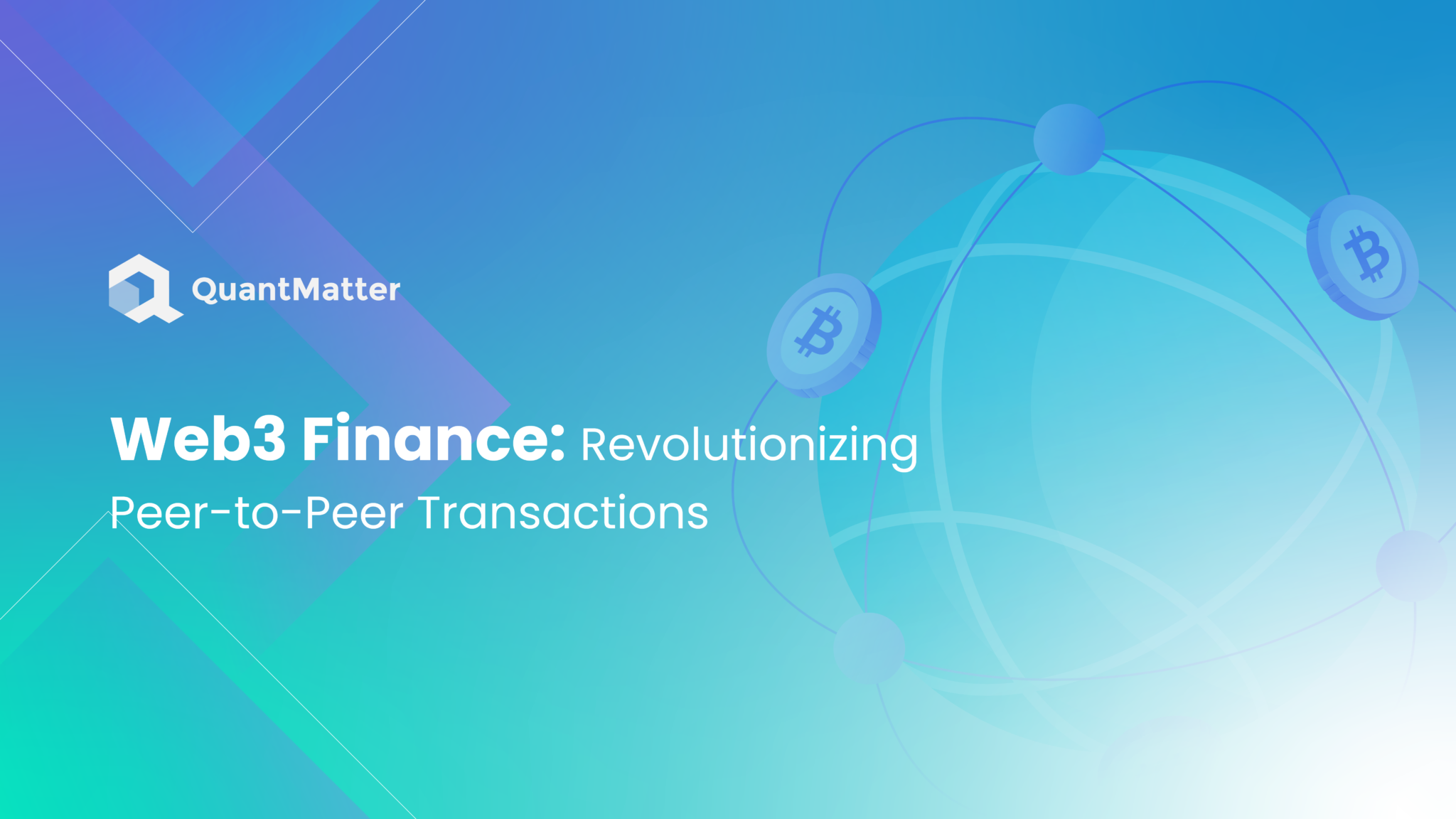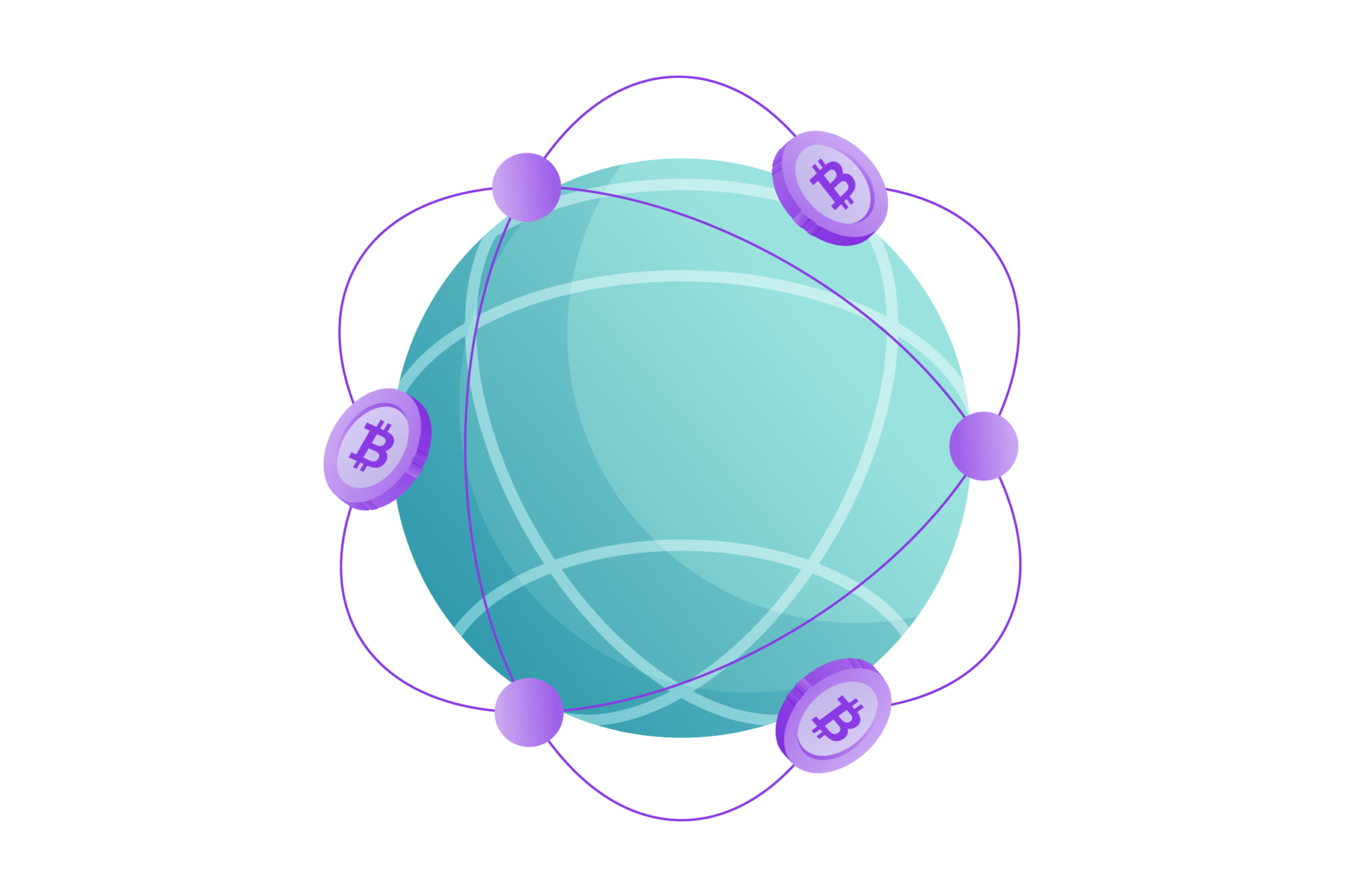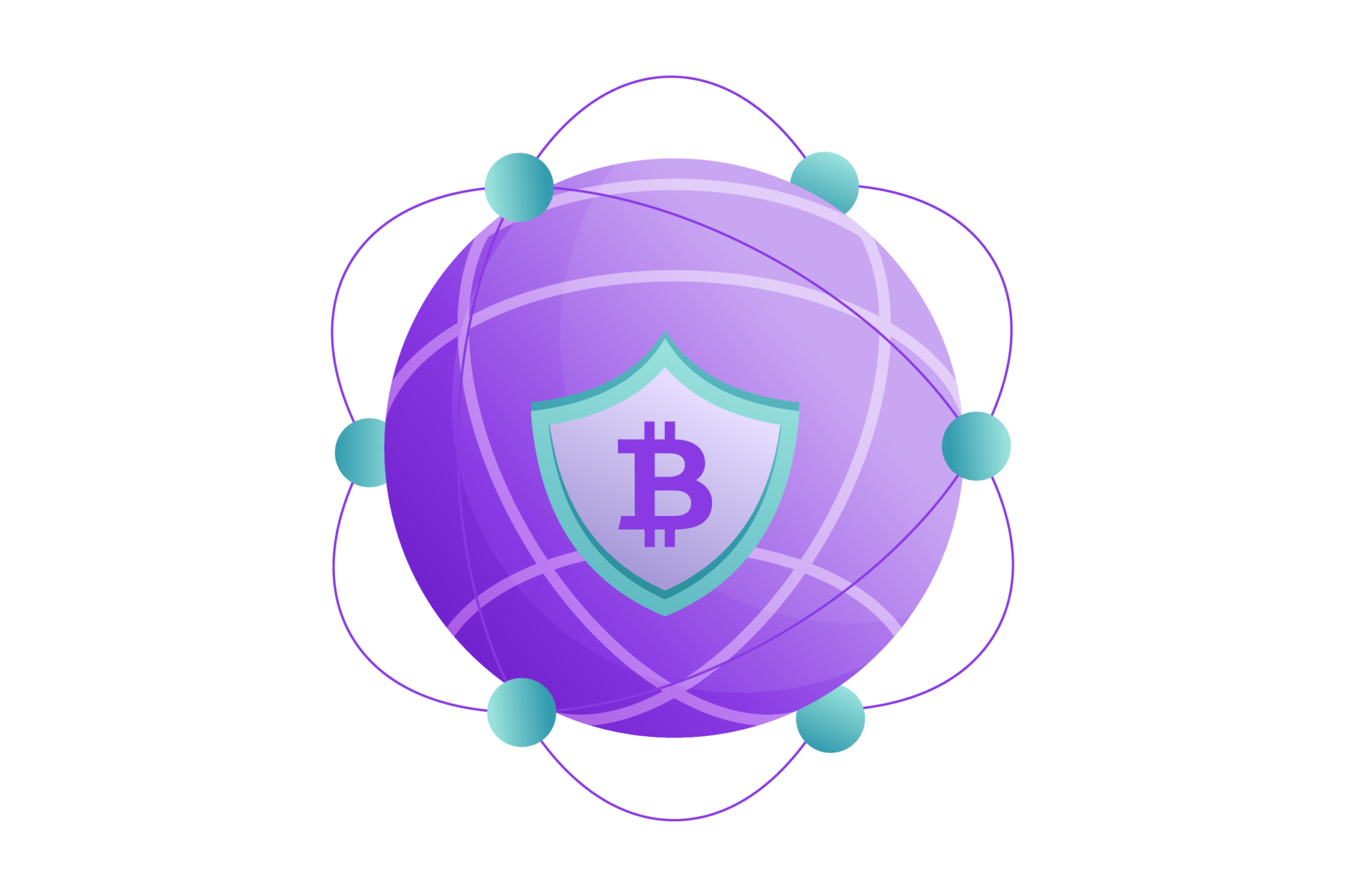
The financial world stands on the brink of a revolution, poised to redefine the essence of transactions and financial interactions across the globe. At the heart of this seismic shift is Web3 finance, a concept that’s rapidly gaining traction and promises to transform the landscape of peer-to-peer transactions. As we delve into the depths of Web3 finance, it’s essential to grasp its foundational principles, how it differs from traditional financial systems, and the myriad ways it’s set to revolutionize the way we think about and handle money.
Web3 finance, often referred to as decentralized finance or DeFi, operates on the principles of blockchain technology, ensuring transactions are not just secure, but also transparent and free from the control of central financial institutions. This paradigm shift towards a more democratized financial system promises to make financial services more accessible to people worldwide, irrespective of their geographical location or economic status. The implications of this are profound, offering a glimpse into a future where financial empowerment and inclusivity are not just ideals, but tangible realities.
At its core, Web3 finance is about more than just transactions; it’s about creating a new financial ecosystem that is open, trustless, and permissionless. This new ecosystem empowers individuals to take control of their financial destinies, free from the constraints and often opaque policies of traditional banking systems. As we explore this exciting frontier, it’s clear that Web3 finance is not merely an evolution in financial technology, but a radical reimagining of how financial interactions can and should occur in the digital age.
The Backbone of Web3 Finance

Blockchain technology is the foundational element of Web3 finance, representing a significant departure from the centralized systems that characterize traditional finance. At its core, blockchain technology provides a distributed ledger that is both secure and transparent, ensuring that all transactions are immutable—meaning they cannot be altered or deleted once they have been added to the blockchain. This level of security and permanence is achieved without the need for a central authority, such as a bank or government, to oversee or validate transactions.
Also Read: 3 Multiple Perspectives on Insider Trading
The decentralization inherent in blockchain technology means that control over transactions and data is spread across the entire network of users rather than being concentrated in the hands of a single entity. This distributed nature not only bolsters security by making it more difficult for malicious actors to compromise the integrity of the data, but it also fosters a more democratic and accessible financial ecosystem. In traditional finance, institutions often act as gatekeepers, controlling access to financial services and products. In contrast, blockchain technology enables a peer-to-peer financial system where anyone, regardless of their location or socio-economic status, can participate directly without the need for intermediaries.
Furthermore, the transparency of blockchain technology ensures that all participants in the network can view transactions, fostering a trustless environment where trust is built into the system itself rather than relying on the reputation or authority of a third party. This transparency, combined with the security and immutability of the blockchain, paves the way for innovative financial services and products that are more inclusive, efficient, and resilient against fraud and censorship.
As Web3 finance continues to evolve, blockchain technology remains its backbone, offering a new paradigm for how financial transactions and services can be structured, accessed, and experienced by users worldwide. This shift towards decentralized finance (DeFi) has the potential to redefine the financial landscape, making it more equitable, transparent, and responsive to the needs of its users.
Democratizing Finance: Accessibility for All

The concept of democratizing finance through Web3 technologies is a revolutionary shift in how financial services are accessed and provided globally. Traditionally, financial systems have been gatekept by institutions that require extensive documentation, credit histories, and sometimes even a certain level of wealth, before individuals can access basic services like opening a bank account, obtaining a loan, or investing in the stock market. This system has left a significant portion of the global population—particularly those in developing countries or from underprivileged backgrounds—financially excluded.
Web3, or the third generation of internet services for websites and applications, leverages blockchain technology to create a decentralized financial (DeFi) ecosystem. This system enables financial transactions and services to be conducted directly between parties, without the need for intermediaries such as banks, brokers, and insurance companies. At its core, Web3 finance aims to make financial services universally accessible. This means anyone with an internet connection can potentially access a wide range of financial services directly from their smartphone or computer.
The implications of this accessibility are profound. For example, in parts of the world where traditional banking infrastructure is limited or non-existent, Web3 finance can provide people with access to savings accounts, loans, insurance, and investment opportunities that were previously out of reach. This could help lift millions out of poverty by providing them with the financial tools necessary for economic stability and growth.
Moreover, Web3 finance can empower individuals by giving them control over their financial data and transactions. In traditional finance, individuals’ financial information is controlled by institutions, which can lead to concerns over privacy and data security. With Web3 finance, individuals hold their financial assets in digital wallets, and transactions are secured through blockchain technology, offering a higher level of security and privacy.
Furthermore, by eliminating intermediaries, Web3 finance can reduce transaction costs and increase the efficiency of financial services. This makes it cheaper for individuals to send money across borders, invest in assets, or secure loans, thereby potentially increasing economic activity and financial inclusion globally.
The democratization of finance through Web3 technologies represents a significant leap forward in making financial services more accessible, affordable, and secure for everyone. It has the potential to integrate billions of people into the global financial system, offering them opportunities for economic advancement that were previously unavailable.
Security and Privacy in the Web3 Era

The Web3 era represents a transformative phase in the digital landscape, characterized by a shift towards decentralization, blockchain technology, and enhanced user sovereignty over data. This new era promises to redefine the concepts of security and privacy but also introduces a unique set of challenges and considerations.
Decentralization and Security
Decentralization, a core tenet of Web3, shifts control from centralized entities to distributed networks, potentially increasing resilience against cyber attacks. Without a single point of failure, systems become less vulnerable to attacks that target centralized databases or infrastructure. However, this dispersion also necessitates new security protocols and mechanisms, as traditional centralized security measures are no longer applicable.
Blockchain Technology
Blockchain, the backbone of Web3, offers immutable record-keeping and transparency. It ensures that once data is entered into the ledger, it cannot be altered or deleted, providing a robust framework for secure transactions and data storage. This immutability is pivotal for trust and security in transactions without the need for intermediaries. Nonetheless, blockchain technology also raises concerns, such as the finality of transactions, which, if executed erroneously or maliciously, cannot be easily reversed.
Smart Contracts
Smart contracts automate transactions and agreements, executing predefined conditions without human intervention. While they enhance efficiency and reduce reliance on trusted third parties, they also pose security risks. Vulnerabilities in smart contract code can lead to significant losses, as seen in various high-profile blockchain exploits. Ensuring the security of smart contracts through thorough testing and auditing becomes crucial in this context.
Privacy Enhancements
Web3 technologies like zero-knowledge proofs offer innovative approaches to privacy, enabling the verification of transactions without revealing sensitive information. This stands in contrast to the traditional web, where user data is often harvested and monetized. However, the public nature of blockchain transactions also raises privacy concerns, necessitating advanced cryptographic techniques to balance transparency and privacy.
Identity Management
Web3 introduces decentralized identity systems, allowing users to own and control their personal data. Unlike traditional centralized identity providers, these systems enable users to share only the necessary information with services, enhancing privacy and security. The challenge lies in creating user-friendly, secure mechanisms for managing and authenticating these digital identities.
Regulatory and Ethical Considerations
The decentralized nature of Web3 complicates regulatory oversight, raising questions about compliance, governance, and legal accountability. Moreover, the pseudonymous nature of transactions can be exploited for illicit activities, necessitating ethical frameworks and technologies to mitigate these risks while preserving user privacy and security.
The transition to Web3 offers promising advancements in security and privacy, leveraging decentralization, blockchain, and new cryptographic technologies. However, this shift also demands a reevaluation of existing security practices, the development of novel safeguards, and a balanced approach to regulation. Ensuring the security and privacy of users in the Web3 era requires ongoing collaboration among technologists, regulators, and the community at large, to address these emerging challenges and harness the full potential of these innovations.
The Future of Transactions: Smart Contracts
The evolution of financial transactions through the implementation of smart contracts is a pivotal development in the realm of Web3, marking a significant shift away from traditional, intermediary-dependent systems. At their core, smart contracts are self-executing contracts with the terms of the agreement between buyer and seller being directly written into lines of code. This innovation is deeply embedded within the blockchain technology, providing an immutable, transparent, and decentralized framework for conducting transactions.
The transformative nature of smart contracts lies in their ability to automate and enforce agreements without the need for intermediaries, such as banks or legal systems. This automation not only accelerates the pace of transactions but also minimizes the risks associated with human error, fraud, and disputes. By eliminating the need for third parties, smart contracts reduce transaction costs and potential points of failure, offering a more secure and efficient alternative to traditional financial mechanisms.
Moreover, smart contracts facilitate a wide range of financial services, including but not limited to, peer-to-peer lending, insurance claims, and automatic payments. This versatility showcases the potential of smart contracts to revolutionize not just the finance sector but various other industries by enabling secure, transparent, and efficient transactions.
Despite their potential, the adoption of smart contracts also presents challenges, including legal recognition and the need for standardization. As the technology matures and these issues are addressed, smart contracts are poised to redefine the future of transactions, making them more secure, efficient, and transparent. This shift towards smart contract-based transactions represents a significant leap forward in the pursuit of a more decentralized and equitable financial system.
Empowering Users: The Rise of DAOs
Decentralized Autonomous Organizations (DAOs) are emerging as a transformative force in the landscape of digital finance and governance, leveraging the principles of Web3 technology. At their core, DAOs are built on blockchain technology, which ensures an unprecedented level of transparency and security. This foundation allows every transaction and decision within the DAO to be recorded on a public ledger, ensuring that all actions are transparent and verifiable by anyone.
The governance of DAOs is encoded in smart contracts — self-executing contracts with the terms of the agreement directly written into code. This automation not only reduces the need for intermediaries, such as lawyers and bankers, thereby lowering transaction costs, but it also minimizes the risk of fraud and corruption. The rules and operations of the DAO are embedded into these contracts, which are immutable and executed by the blockchain, ensuring that they operate in a predictable and tamper-proof manner.
One of the most revolutionary aspects of DAOs is their governance model. Unlike traditional organizations, which typically have a top-down structure where decisions are made by a small group of leaders, DAOs operate on a model of community consensus. This means that every member or token holder has a say in the direction and decision-making of the organization. Voting rights are often proportional to the amount of tokens an individual holds, aligning the incentives of the stakeholders with the success of the DAO. This democratization of decision-making can lead to more equitable and efficient outcomes, as the wisdom of the crowd informs the DAO’s actions.
Furthermore, DAOs facilitate a global and inclusive model of participation. Since they are based on blockchain technology, anyone with an internet connection can become a stakeholder, regardless of their geographical location. This opens up opportunities for a wide range of participants to contribute to and benefit from the DAO, breaking down barriers to entry that exist in traditional financial and organizational systems.
Also Read: 8 Effective Interest Rate Strategies for Individuals
The implications of this shift are vast, touching on areas such as venture capital, charitable donations, community governance, and more. For instance, DAOs have been used to pool resources for collective investments, fund public goods, manage decentralized finance (DeFi) protocols, and even make decisions in virtual worlds and gaming platforms. This flexibility and adaptability make DAOs a potentially powerful tool for organizing human activity and capital in the digital age.
However, the rise of DAOs is not without challenges. Legal recognition, regulatory compliance, and the potential for coding errors or exploits in smart contracts are significant hurdles that the community continues to address. Despite these challenges, the potential of DAOs to empower users and stakeholders by providing a transparent, inclusive, and efficient model of governance makes them a fascinating development in the evolution of organizational structures and digital finance.
Conclusion
As we stand on the precipice of this new financial era, the potential of Web3 finance to transform peer-to-peer transactions is both immense and undeniable. The shift towards a more decentralized, secure, and inclusive financial system is not just a technological advancement but a step towards a more equitable world. The implications of Web3 finance extend beyond mere transactions; it’s about reshaping the economic fabric of society, where financial empowerment and inclusivity are within everyone’s reach.
The journey towards a fully realized Web3 financial ecosystem is fraught with challenges, from technological hurdles to regulatory uncertainties. Yet, the progress made thus far points to a future where these challenges are surmountable, paving the way for a financial system that is not only more efficient and secure but also more aligned with the values of fairness and inclusivity.
In conclusion, Web3 finance represents a bold step forward in the evolution of financial systems, offering a vision of the future where finance is not just a tool for economic transactions but a platform for social and economic empowerment. As we continue to explore and expand the boundaries of Web3 finance, the promise of a more open, secure, and inclusive financial world becomes increasingly tangible. The revolution in peer-to-peer transactions is just beginning, and its impact will be felt for generations to come, shaping the future of finance in ways we are only beginning to imagine.
Disclaimer: The information provided by Quant Matter in this article is intended for general informational purposes and does not reflect the company’s opinion. It is not intended as investment advice or a recommendation. Readers are strongly advised to conduct their own thorough research and consult with a qualified financial advisor before making any financial decisions.

Joshua Soriano
As an author, I bring clarity to the complex intersections of technology and finance. My focus is on unraveling the complexities of using data science and machine learning in the cryptocurrency market, aiming to make the principles of quantitative trading understandable for everyone. Through my writing, I invite readers to explore how cutting-edge technology can be applied to make informed decisions in the fast-paced world of crypto trading, simplifying advanced concepts into engaging and accessible narratives.
- Joshua Soriano#molongui-disabled-link
- Joshua Soriano#molongui-disabled-link
- Joshua Soriano#molongui-disabled-link
- Joshua Soriano#molongui-disabled-link
